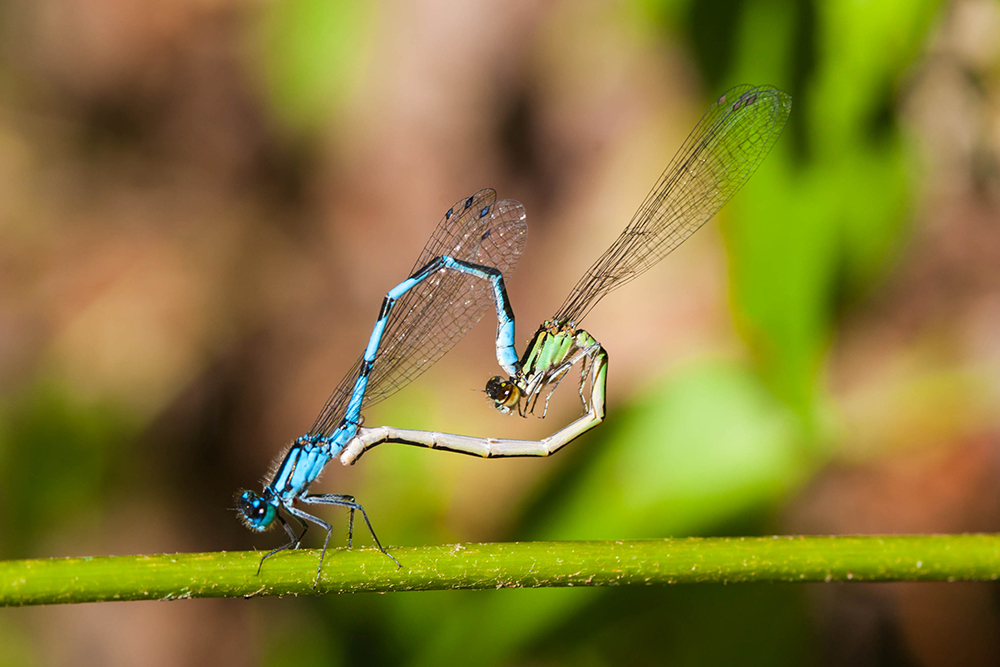NatureZen: Hearts Soaring
words and photos by Melissa McMasters
As we head into Valentine’s month, it seems like every shop aisle is filled with hearts of all sizes and colors, while outside everything is a shade of brown or gray. So let’s travel via photos to a time of the year when those colorful hearts can be found at the edges of ponds, creeks, and rivers. It’s time for a deep dive into dragonfly lovin’.
Act I: They Meet
As it goes throughout the animal kingdom, some species of dragonflies and damselflies use courtship displays to both attract mates and signal interest. For instance, some male damselflies will curl and uncurl their abdomens in a “flicking” motion to attract attention, and females will bend their abdomens into a Z shape to show that they are receptive to mating. I’m not sure that’s what’s going on with these Western willow spreadwings, but the photos are a good illustration of what that behavior looks like.
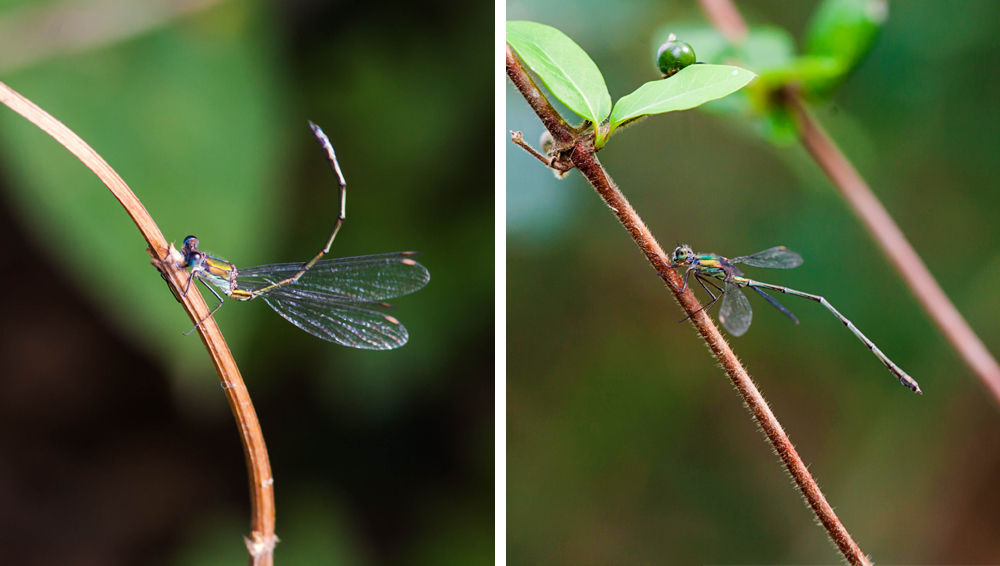
Act II: The Chase
Once a male has found a receptive female, it’s time to connect, which takes a very specific form in dragonflies and damselflies. Males use “claspers” at the end of their abdomens to grab females behind their heads. The female of each species has specially shaped grooves in the neck area into which the male’s claspers fit. This isn’t actually copulation yet; it’s just to keep other males away from the female.
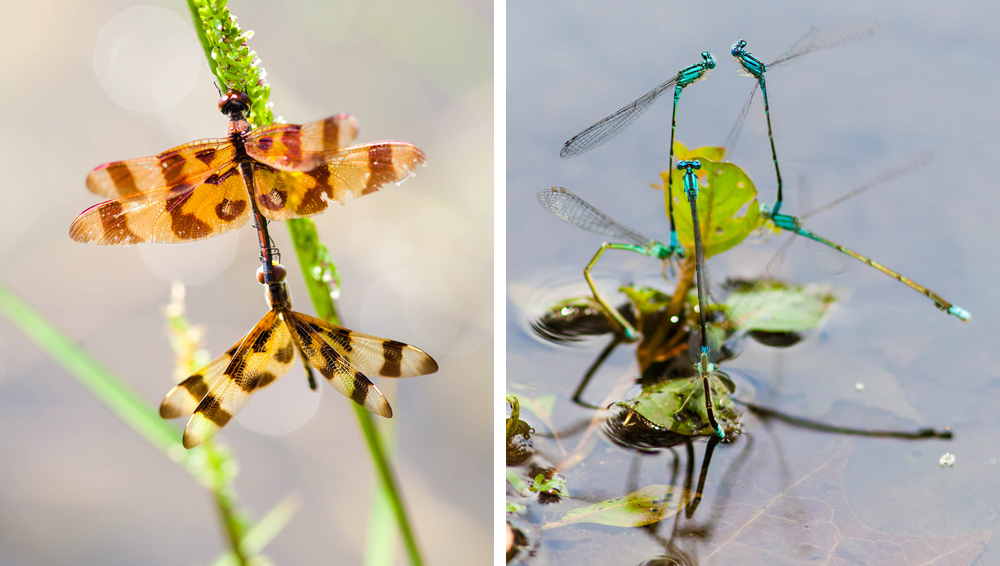
As you can see with the vivid dancers below, competitive suitors will keep trying to jump in even after this clasping has taken place!
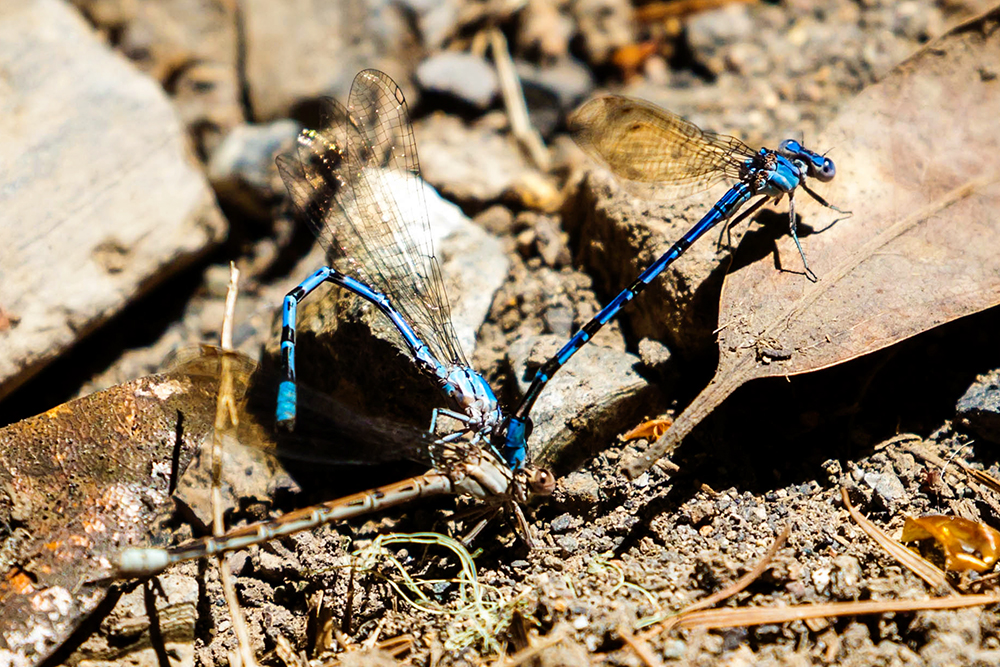
Once the female’s head is clasped, the two are in tandem. They may fly around this way, trying to find an undisturbed spot, but eventually they’ll settle.
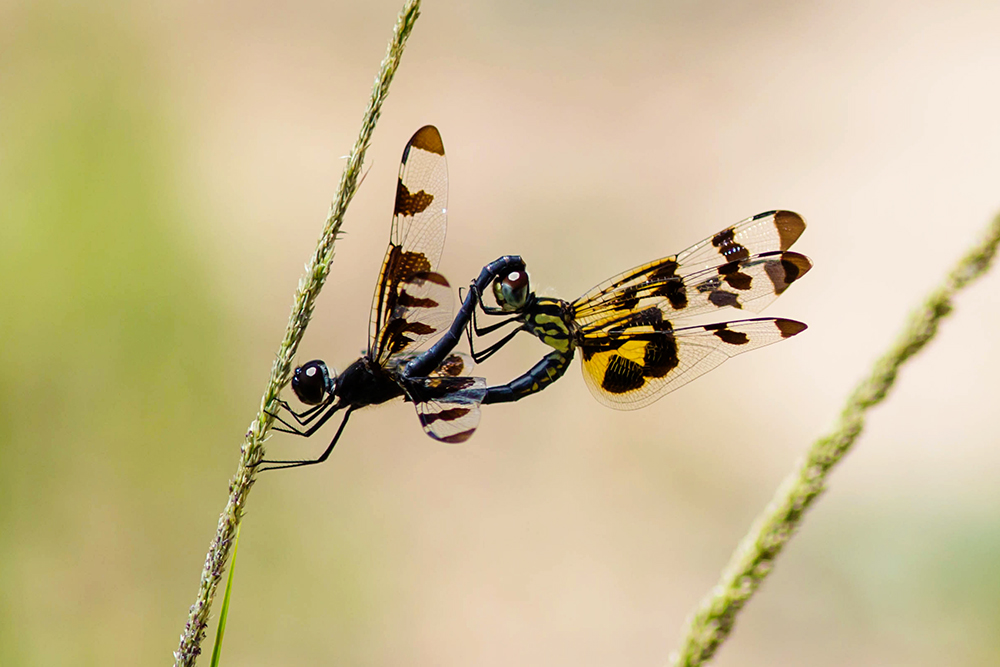
The male initiates the actual mating process by flexing his abdomen, prompting the female to pull up her own abdomen and attach to the male’s hamules, a secondary sex organ that actually transfers the sperm to the female. Before the transfer takes place, though, the male uses spoon-like fixtures to scoop out any deposits left over from previous partners, so that the eggs the female is about to lay will pass on his genes and not someone else’s.
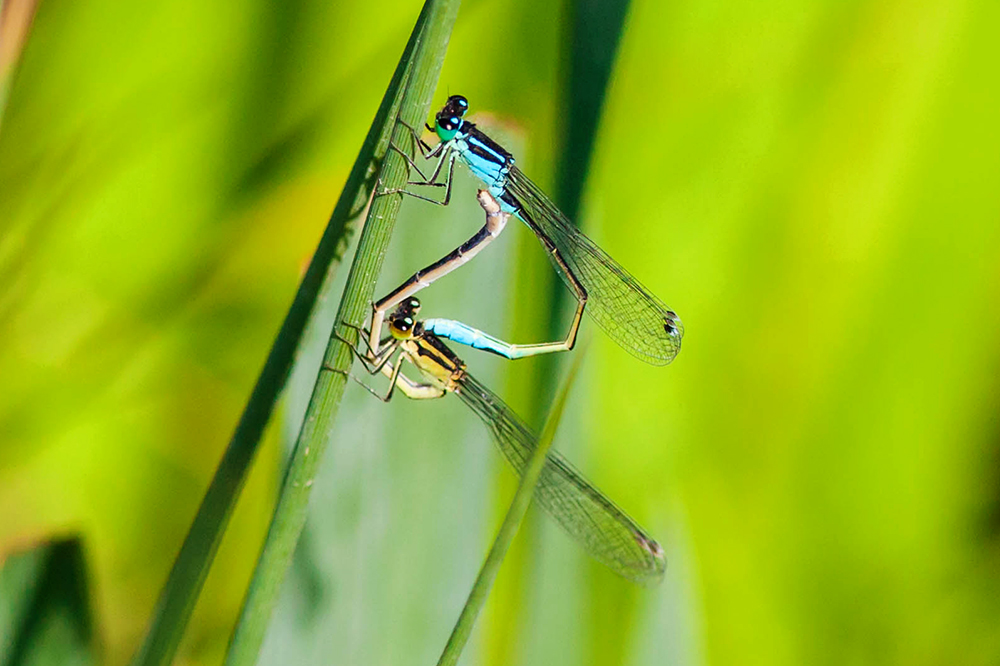
All of this is a very clinical way of talking about something that looks quite beautiful in the field. Dragonflies and damselflies, when fully attached, form a wheel that can sometimes look like a heart. When these insects are in the wheel position, we can see clearly the sexual dimorphism (differences in color and markings between males and females) that exists within a species, and this can help us to identify them. Female dragonflies and damselflies can often look very similar across species, but when paired with a male, their true identity is more obvious.
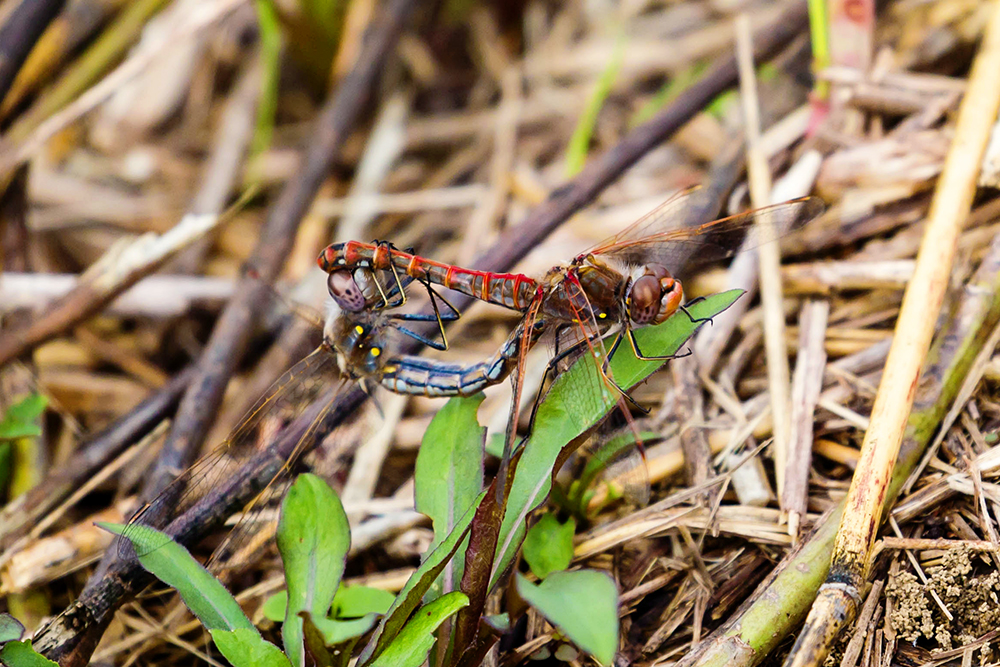
Act III: Junior
After copulation, which can last for several minutes, the pair release the wheel. It’s time to lay eggs. In some species, the male remains attached to the female’s head; in others, the male simply remains close by, guarding the female as she deposits eggs into vegetation or water. Those that remain attached can provide stability for the female, especially if the plants she’s using are partially submerged. She doesn’t want to get her wings wet, but if it’s necessary, her partner can help pull her back up out of the water.
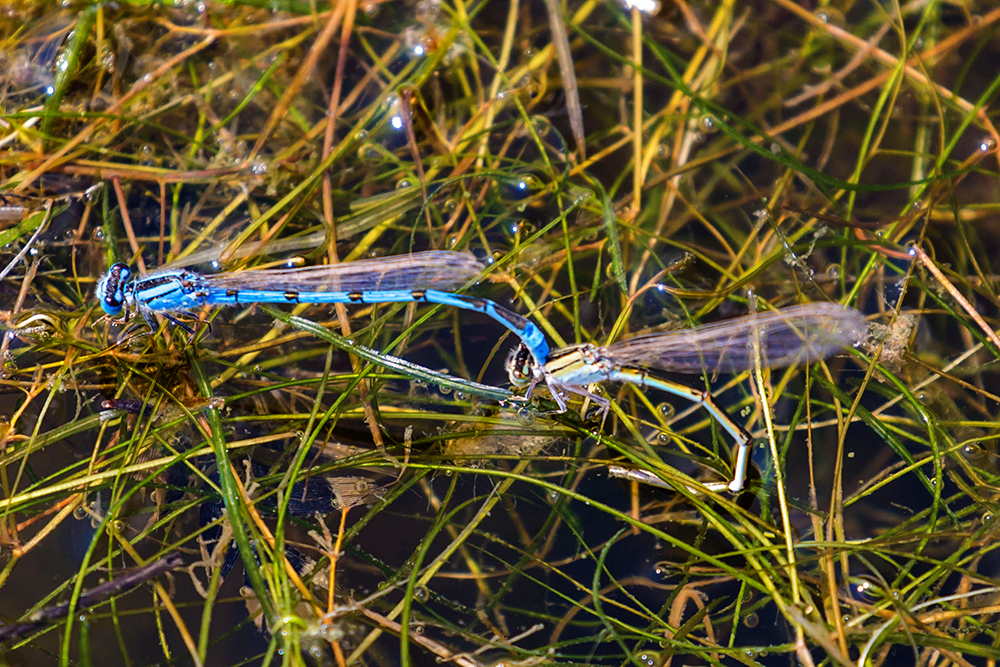
Female damselflies, and dragonflies in the darner family, lay their eggs inside plant tissue or rotten wood using a special structure called the ovipositor, which has a blade used for cutting into plants.
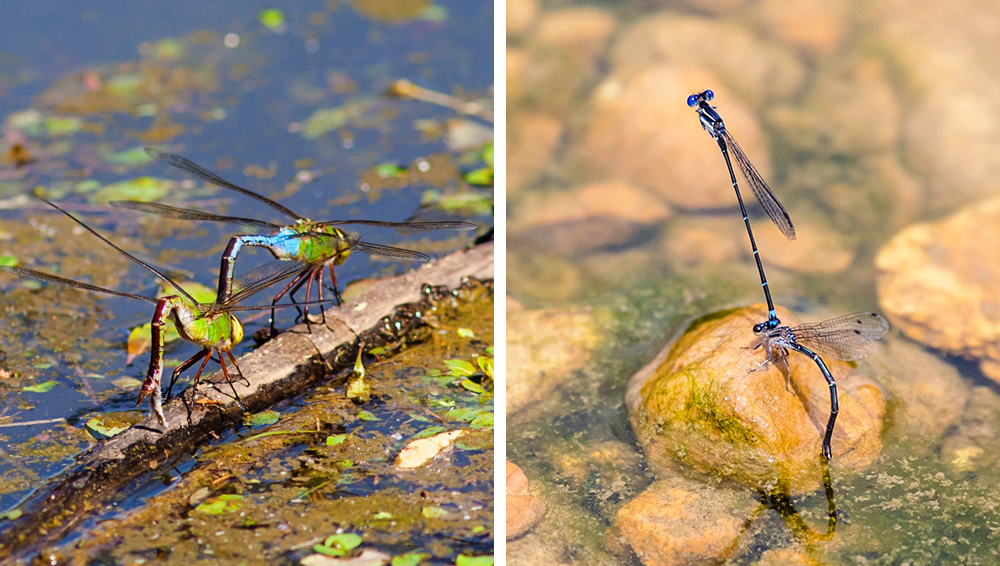
Most other female dragonflies lay eggs by dipping their abdomens into water while still in flight. This great blue skimmer is pulling up after laying one clutch of eggs in a creek, and she’ll continue to dip her abdomen down below the water every few seconds.

When the eggs hatch, dragonflies and damselflies live as aquatic larvae for anywhere between three months and five years, although the average is a year or two. When they finally molt into their adult versions (a process covered in a previous NatureZen post), they only have a few weeks to wheel up and create the next generation.
When spring arrives, make sure to take a look down anytime you’re around a body of water. You may just see it dotted with tiny hearts and know that you’re witnessing the poetic perpetuation of a species!
(I would like to extend a deep bow to any of you wondering why I used the headings from the act breaks of Ms. Pac-Man to structure this edition of NatureZen. There is no satisfactory answer to this question!)
